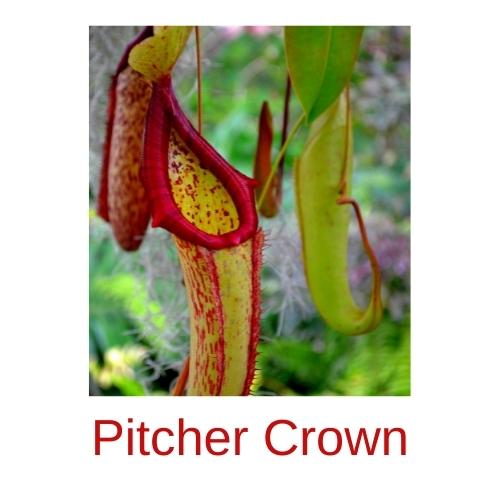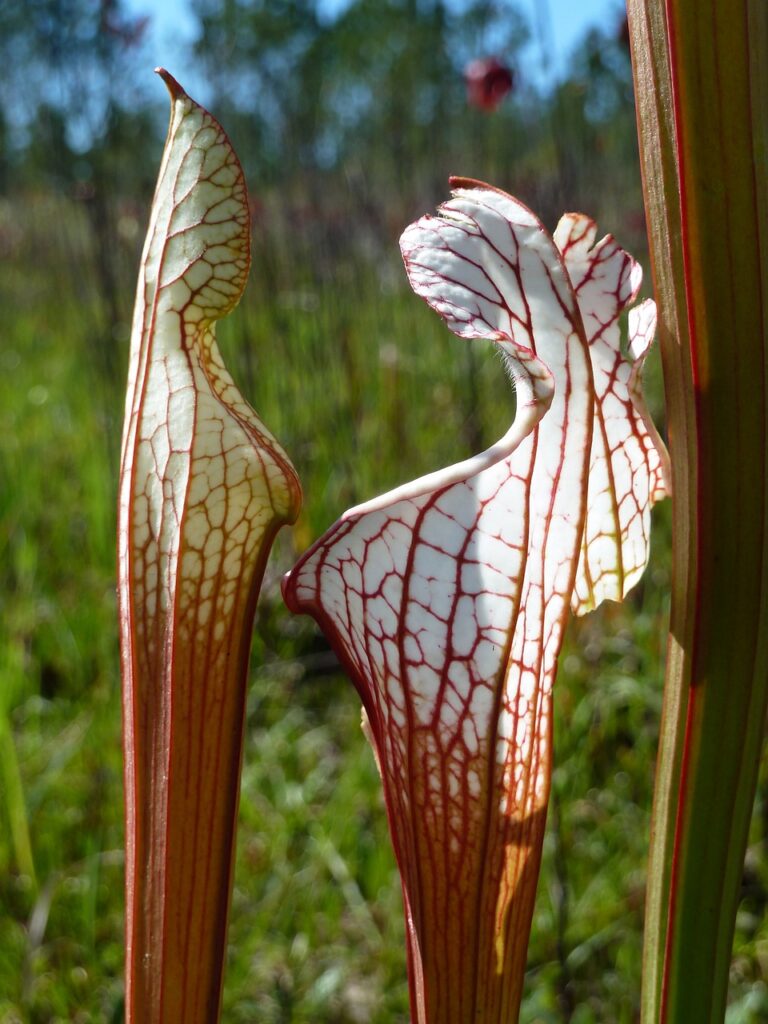Do you have a pitcher plant and are wondering why its pitcher is closed? Pitcher plants are found in many different habitats, such as bogs and swamps. They get their name from their pitcher-shaped leaves, used for trapping and digesting insects. Pitcher plants are carnivorous plants, they absorb their nutrients from trapping and eating bugs.
Pitcher Plant And Its Unique Design
Pitcher plant is an amazing example of nature’s perfect design. The plant has a deep cup-like shape with a small opening at the top. The inside of the pitcher is lined with downward-pointing hairs. Insects are attracted to the sweet nectar at the bottom of the pitcher and often crawl in, but find it difficult to climb back out due to the slippery surface and downward pointing hairs.
Once an insect falls into the pitcher, it cannot escape and is eventually digested by the plant. Pitchers are able to grow close together because they get all the nutrients they need from digesting insects. In this way, they are able to thrive in nutrient-poor environments.
Reasons For A Closed Pitcher Plant
One reason why a pitcher plant’s pitcher may be closed is that the plant is not actively trapping and digesting insects at that time. Pitcher plants typically only open their pitchers when they are ready to trap prey. If the pitcher is already full of digestive fluid, the plant may close the pitcher to prevent more insects from entering.
Inadequate Sunlight
Another reason your pitcher plant is closed is that the plant is not receiving enough sunlight. If a plant isn’t getting enough sunlight, it won’t be able to produce enough energy to open its pitchers.
The ideal amount of sunlight for a pitcher plant is 12 hours per day. In nature, pitcher plants typically grow in areas that receive full sun, such as open fields or forest edges. However, they can also be grown in pots and brought indoors, as long as they are placed in a bright location.
How To Deal With Plant Diseases?
When pitchers are shut down by disease you have to determine what is going on. Since there are numerous factors, only a thorough examination will help you decide.
Viruses Afflicted With Insects
Observe carefully and identify the signs of the presence of pests. They are insects or eggs, half-eaten leaves, liquid, and debris around the plants. It can happen whether the plant is outside or inside. Using immersion water may be a better option for pest control.
If you can’t remove them with pesticides, take them away as soon as possible. Use a plant that has been tested for its safety and abide by instructions.
Fungal Infections
These ailments can spread quickly and require action soon. Remove the affected pitcher. It will be replaced later.
Improper Temperature
Pitcher plants require a lot of moisture to live, so they can be particular about the weather conditions in their habitat. For example, pitcher plants prefer humid conditions with moderate temperatures. If the weather is too hot or too cold, it is winter or there is a drought the plants will not be able to produce pitchers. Or, their pitchers may close.
Close Pticher Plant: Uncommon Reasons
Pitcher plants are unique carnivorous plants that have evolved to capture and digest small animals, such as insects. One of the most fascinating features of pitcher plants is their ability to close their leaves in response to various stimuli. While the reasons for this behavior are not fully understood, there are a few possible explanations.
One theory is that closing the leaves helps to prevent larger animals, such as mammals, from gaining access to the pitcher plant’s trap. Another possibility is that it helps to protect the plant from wind damage. Finally, closing the leaves may also serve to conserve water by preventing evaporation. Regardless of the reasons for this behavior, it is clear that pitcher plants have adapted in amazing ways to survive in their environment.
How To Get Pitcher Plants To Open?
The function of a pitcher plant may suffer if they do not cope with extreme temperature. Some pitchers go dwindling, others don’t. Also, you need to consider the other aspects. All those factors will affect the pitchers and they could shut down.
Tell Me The Best Way To Encourage Pitcher Plants To Open?
The best recommendation we can give you would be to look at the environment in which the carnivorous species lives and assess whether it is appropriate. To accomplish this task, one must take into consideration the three factors i.e temperature, water level, and pests, because the problem generally is this.
Pitcher Plants Closing: Not To Panic
Pitcher plants usually close at night or during periods of bad weather. This is thought to conserve energy and prevent water loss. When pitcher plants close, their leaves fold inwards, sealing off the opening at the top of the pitcher.
Some pitcher plant species have lids that help to further seal off the pitcher opening. The pitcher plant closure is thought to be an adaptive behavior that helps these plants survive in nutrient-poor environments.
Proper Care For Pitcher Plants: Quick Checklist
- Choose a suitable pot that is deep enough to accommodate the plant’s roots and slightly wider than the plant itself.
- Fill the pot with a mixture of half peat moss and half sand.
- Water the plant regularly, keeping the soil moist but not soggy.
- Place the plant in indirect sunlight.
- Feed the plant live insects as a source of nutrition.
- If you see the tips of the leaves turning brown, it is an indication that the plant does not have moist soil. Misting with distilled water can help.
By taking these factors into account, gardeners can ensure that their pitcher plants are healthy and vigorous. Pitcher plants are an unusual and exotic addition to any home or garden.
So, if you see a pitcher plant with closed pitchers, don’t worry! There’s probably a perfectly good explanation for it. With proper pitcher plant care, it will likely open soon enough, ready to trap more unsuspecting insects.








